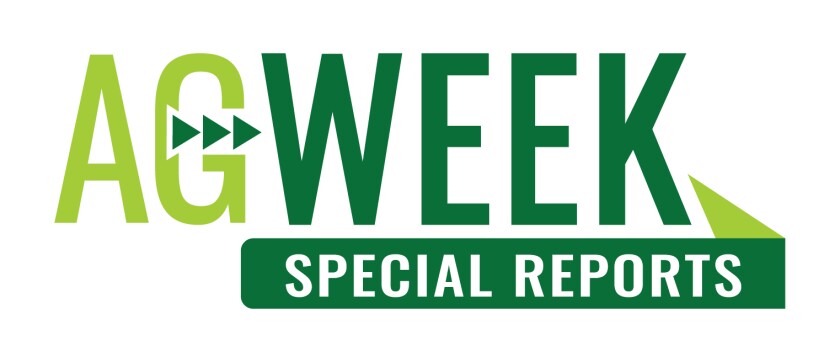When a farmer hauls a load of corn to the ethanol plant, could he actually be rewarded for using practices that shrink the carbon footprint of that ethanol plant?
That should be the goal says Brendan Jordan, of the Great Plains Institute in Minnesota.
ADVERTISEMENT
"It's complicated, sure, but we think we should figure out how to give credit to growers and compensate them for what they're doing to contribute to lower carbon intensity biofuels,” Jordan said.

Geoff Cooper, executive director of the Renewable Fuels Association, says progress is being made as more states look at implementing a clean fuel standard as California and Oregon have done.
“We’re not quite there yet,” Cooper says. “But we certainly see that future around the corner. And certainly there are some programs and some pilot programs and trials.”
He said support from the U.S. Department of Agriculture will help make that transition happen.

When California introduced its in 2011, Jordan said there was interest in the Midwest, but seeing how the policy played out in California cooled that interest.
“There are so many issues with the California program that there was not a lot of appetite to pursue several similar policies in the Midwest,” Jordan said.
But that has been changing with Minnesota among the states farthest along in discussing implementing a clean fuel program.
ADVERTISEMENT
Jordan said that while California uses dozens of employees to implement its system, Oregon manages its program with just four employees.
And of particular concern for farmers is the assumption under the California model that increasing corn output means putting more acres into production that negatively affect the environment and greenhouse gas emissions.

But Cooper says that assumption is flawed.
“The truth is, well, 15 years after a lot of these regulations were adopted … there's really no evidence that cropland has expanded,” Cooper said. “We're actually producing more corn and more soybeans, more everything on less cropland today than we were 10, 15, 20, 30 years ago.”

He said he favors programs implemented in Canada but that Oregon could be a model for other states.
“Here in the United States, we look at the Oregon program, as being the best example of a low carbon fuel standard done correctly,” Cooper said. “It really all boils down to: How are they doing the modeling? How are they doing the estimation of the carbon footprint of these different biofuels and different processes?”
ADVERTISEMENT

He said Oregon uses the U.S. Department of Energy's modeling on biofuels, which is updated annually.
“It just does a better job of reflecting what's actually happening on the ground,” Cooper said.
Jordan said he is hopeful that there could be a regional approach to “harmonize” a clean fuel standard in different Midwest states.

“That can make it easier for both the regulated parties and for the administrators of the program,” he said.
He said there should at least be some sort of reciprocity agreement.
“If you get a pathway approved in Minnesota, you can use it in Iowa or you can use it in Michigan,” he said.
There is some concern from farmers that a clean fuel standard will give an unfair advantage to electric vehicles and create some burdensome reporting practices making it a non-starter for some.
ADVERTISEMENT
Bills in the Minnesota Legislature aimed at creating a clean fuel standard floundered in recent sessions when power was divided between Republicans and Democrats.
Jordan said there was some hope for more progress in the 2023 session with Democrats controlling both houses of the Legislature and the governorship. But he said other environmental bills were higher priority this year. A clean fuel standard will have to wait its turn.
In testimony about a clean fuel standard in Minnesota, Brian Werner of the Minnesota Bio-Fuels Association, had four main talking points.

Be technology and feedstock neutral: Meaning opportunities both for bio fuels and electric vehicles. “We oppose any policy that seeks to prohibit credit generation from low carbon biofuels or solely devotes credit revenue to one technology over another,” Werner said.
Proper accounting for production practices and evaluation of carbon intensity: He favors Department of Energy measurements “as long as its adaptation for state use does not incorrectly apply indirect land use change penalties or other penalties not applied to other low carbon fuel technologies that result in an unlevel playing field for biofuels. Any process must fully protect farm-level data, he said.
Increased market access for renewable fuels: This would include higher ethanol blends and funding for biofuel infrastructure.
ADVERTISEMENT
Regional collaboration: “Early coordination and collaborative development on the policy design would help to ensure harmonization and efficient implementation in multiple Midwest states with similar economic characteristics,”
“If crafted properly, and combined with complementary policies, we believe that a low carbon fuel standard in Minnesota offers the potential to both lower greenhouse gas emissions from our transportation sector and support communities in greater Minnesota,” he said.











